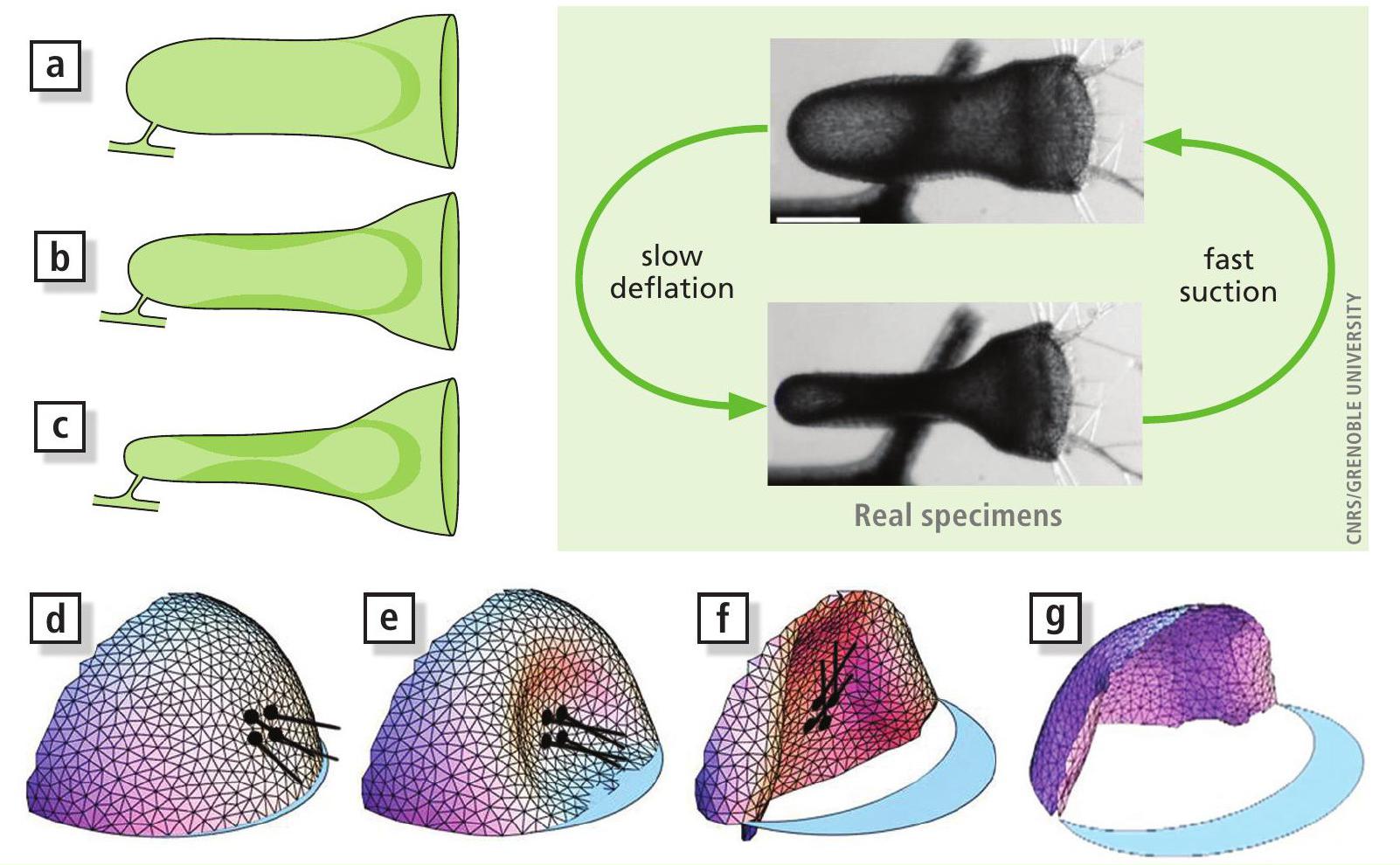
Glands just behind the threshold of the trapdoor pump water out of the trap. This creates negative pressure inside the trap, which deforms, storing elastic energy in the walls as shown in a–c (a trap viewed from above). This process takes up to 40 minutes — the trap is set. The trapdoor then functions more like a valve than a door, and at this point forms a convex shape bulging outwards towards the water. The door is not rigid and can be deformed by an increase in pressure (see d–g). This is what happens when the trap is triggered. The door is able to maintain its shape until it reaches a threshold pressure, above which it starts to buckle and deform (see e). Pressure on a trigger hair attached to the door exerts the increased pressure, but as the door buckles inwards this causes the trigger hairs to collapse. The door is still sealed at this point, but continued inward buckling breaks the watertight seal (f). This causes water (and the prey) to rush into the trap as the door folds completely in on itself, creating a concave shape facing inwards (see g). It takes only about 2.5 milliseconds for the water to fill the trap (along with the prey), then the pressure within the trap is equal to that outside it. The elastic properties of the door cause it to spring back into its convex shape (d) and recreate the watertight seal, so the trap can be reset.
Your organisation does not have access to this article.
Sign up today to give your students the edge they need to achieve their best grades with subject expertise
Subscribe




